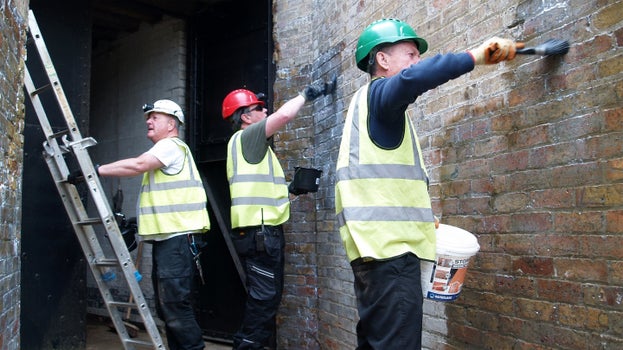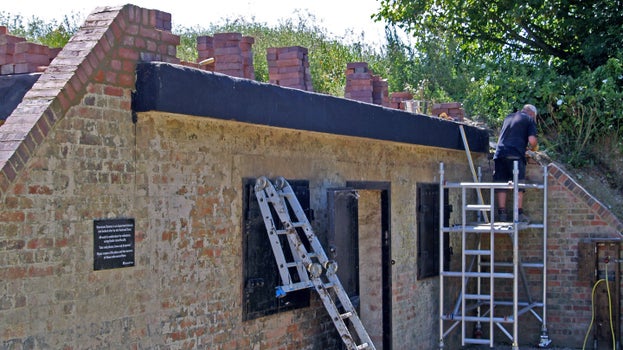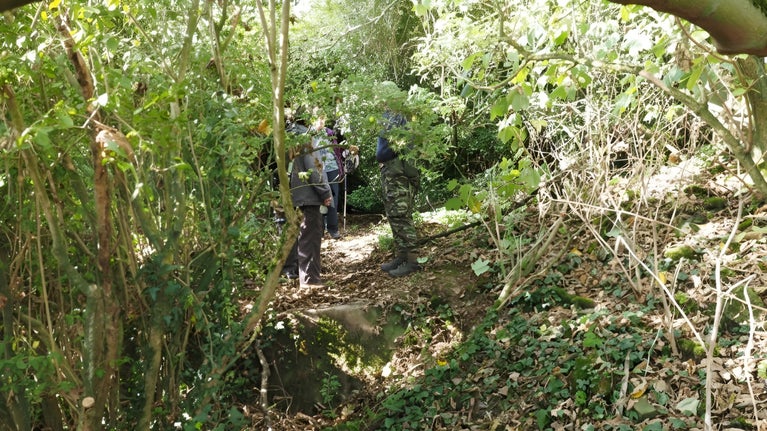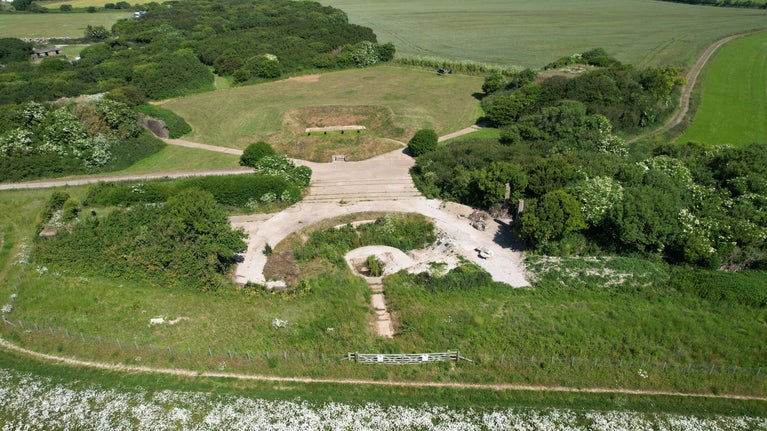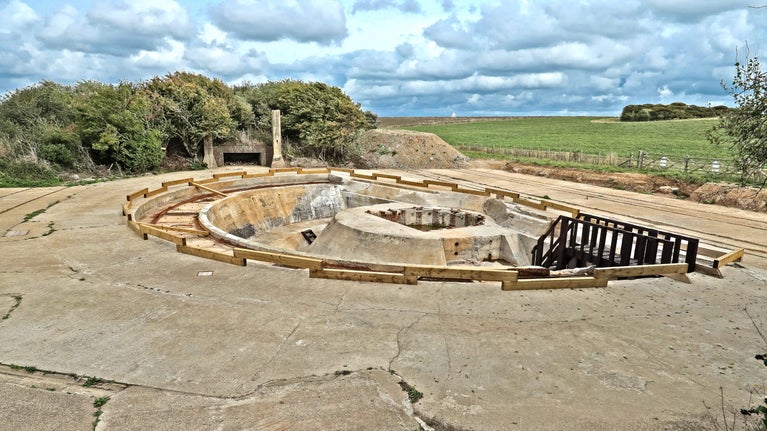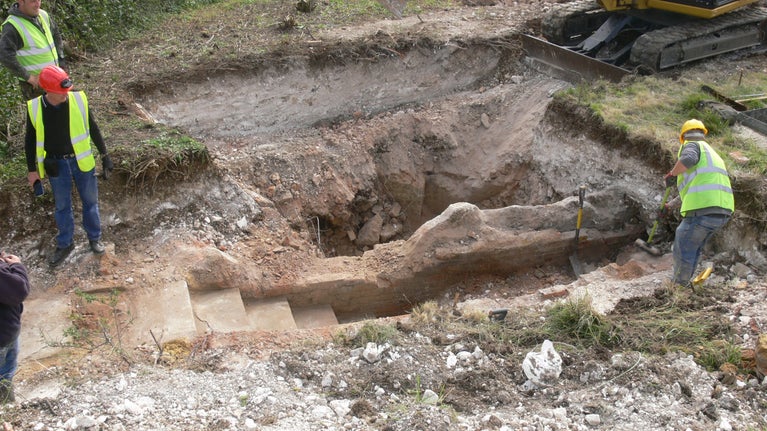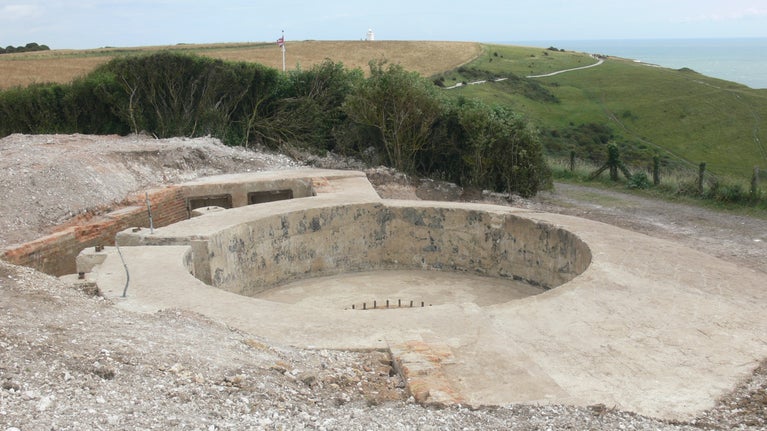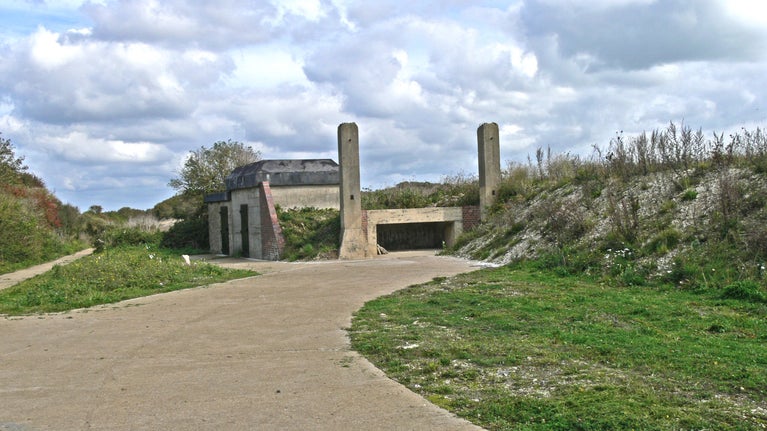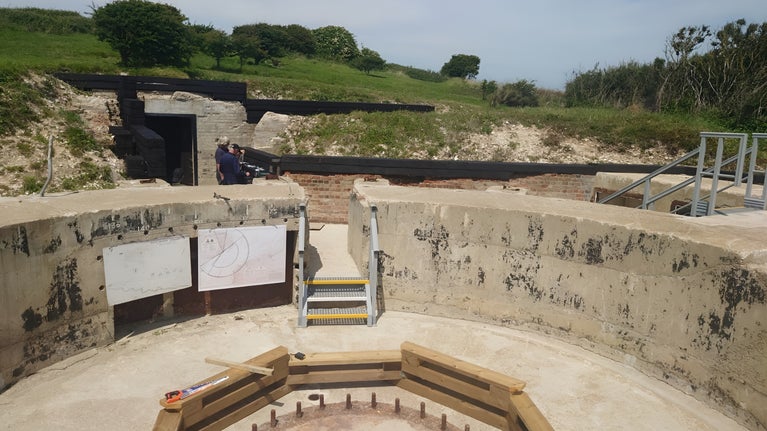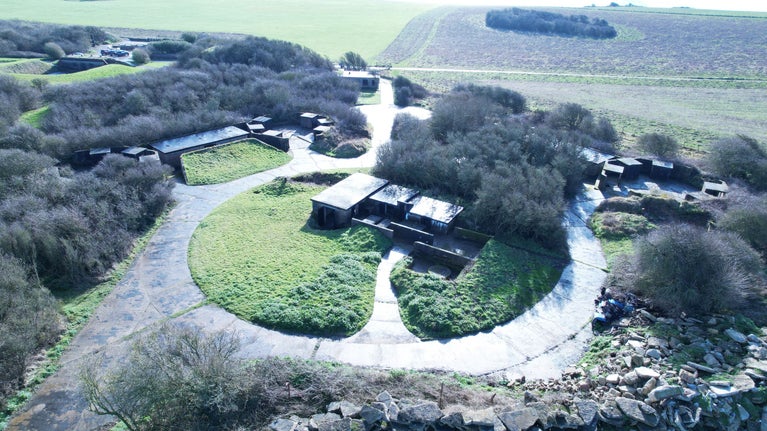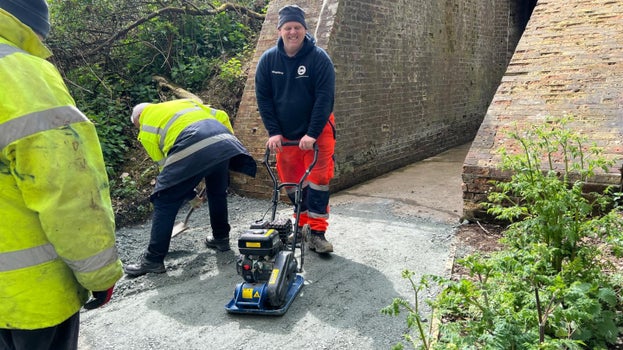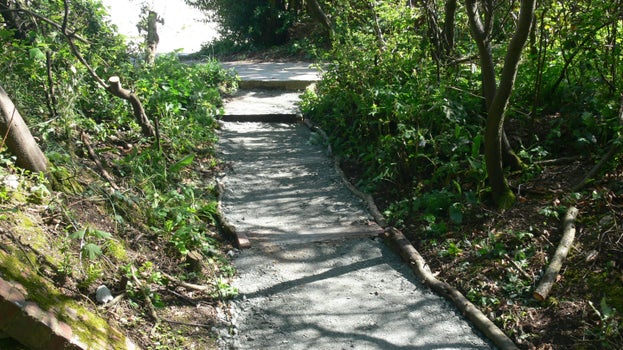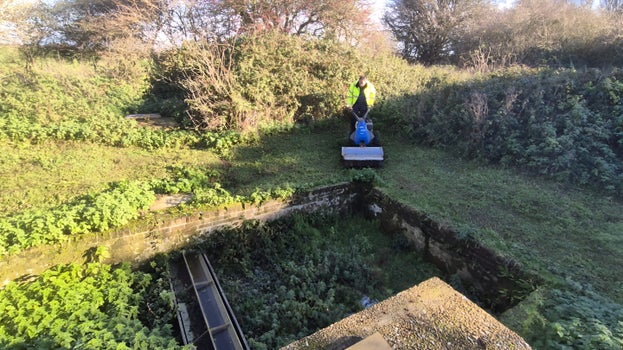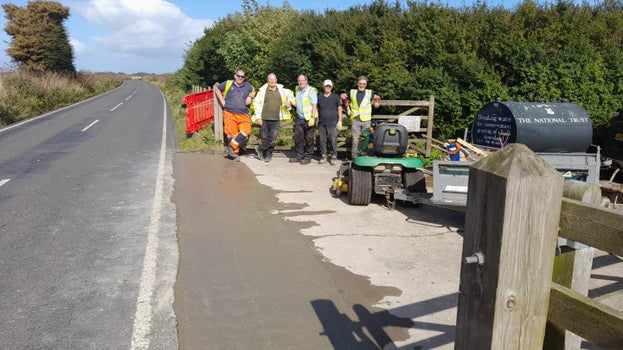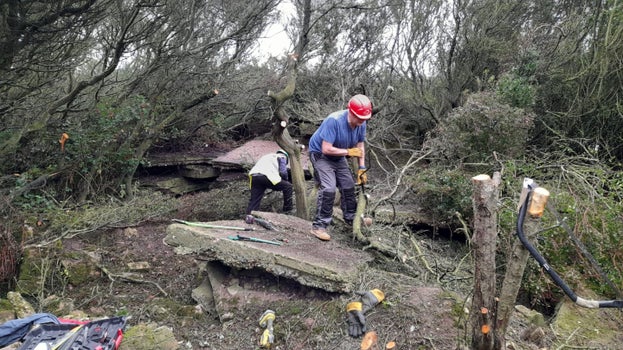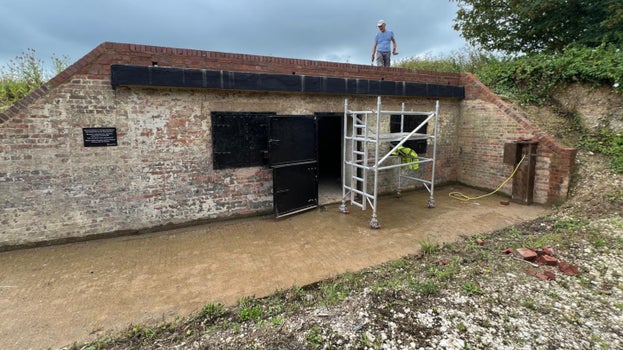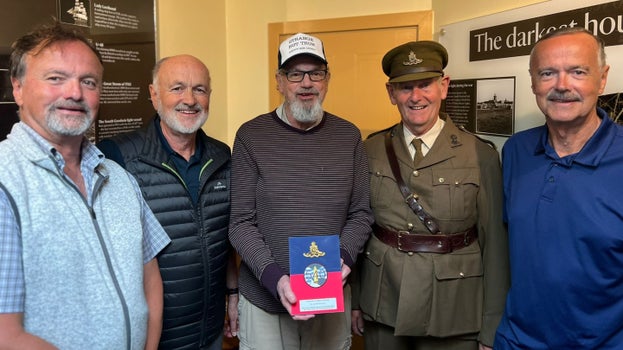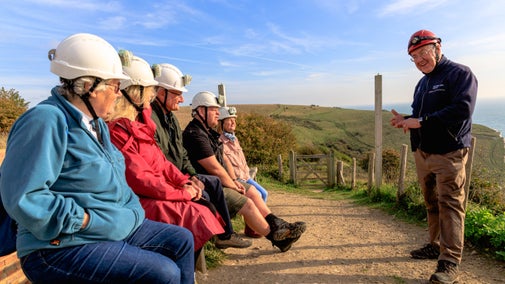May / June 2025
Protecting and rebuilding the brickwork
We’re proud to share recent conservation work carried out by our dedicated team of volunteers—made possible through the generous support of our partner organisations. A key milestone was the application of Stormdry Masonry Protection Cream to the newly repaired brickwork on the magazine buttresses. Supplied by our partner, Safeguard Europe, this specialist treatment penetrates deep into the masonry, forming an invisible water-repellent barrier. It helps protect the now porous bricks from frost damage and delamination, ensuring long-term preservation. All eight buttresses—two per magazine—have now been treated and this should now protect these historic structures for decades to come.
After the guns were dismantled in 1957, the site returned to agriculture. While no buildings were fully demolished, many were buried under soil to maximise farmland. In some cases, parapets and other features were removed to reduce the depth of cover required. The Clem gun store was one such structure, completely buried until its excavation in 2024. Volunteers are pictured reinstating the parapet, restoring the building’s original profile and improving its resistance to the elements. This careful reconstruction enhances the site’s visual integrity and honours its wartime heritage.
We’re immensely grateful to everyone who has contributed to this journey—from suppliers and supporters to the volunteers who continue to bring Wanstone’s story back to life, in some cases, quite literally, one brick at a time. This phase of the Wanstone Rediscovered project ended on 30 June 2025, but we are delighted to be able to announce that a new, internally funded project launched on 1 July 2025, enabling us to take the work we have already completed forward. A new blog will trace the progress of this project.
